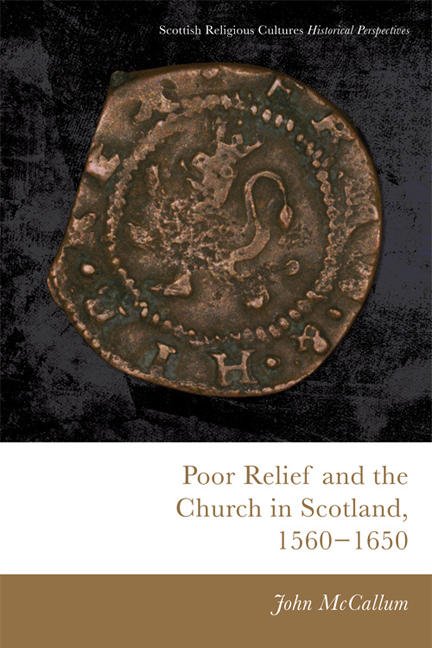Book contents
- Frontmatter
- Contents
- List of Tables
- Acknowledgements
- Conventions
- Abbreviations
- Map of Key Locations Mentioned
- Introduction
- 1 Ideas, Attitudes and Ambitions
- Part I The Development of Kirk Session Poor Relief
- Part II The Nature of Kirk Session Poor Relief
- Conclusion
- Appendix Equivalent Values from Wages and Prices
- Bibliography
- Index
Appendix - Equivalent Values from Wages and Prices
Published online by Cambridge University Press: 14 September 2018
- Frontmatter
- Contents
- List of Tables
- Acknowledgements
- Conventions
- Abbreviations
- Map of Key Locations Mentioned
- Introduction
- 1 Ideas, Attitudes and Ambitions
- Part I The Development of Kirk Session Poor Relief
- Part II The Nature of Kirk Session Poor Relief
- Conclusion
- Appendix Equivalent Values from Wages and Prices
- Bibliography
- Index
Summary
As the Introduction discussed, precise quantification or purely statistical comparison of the real value of relief collections or distributions is impossible, because the records do not tell us about the specific needs or situations of most individuals, and more importantly we rarely have adequate information on important variables such as the contemporary population of a parish, or local prices, rents or wages. The book's analysis therefore offers more fine-grained and contextual readings of relief efforts in each parish considered (especially in Chapters 2–4), and integrates quantitative and qualitative approaches as appropriate to each example. However there are some sixteenth- and seventeenth-century value equivalents that can provide a broad and approximate framework for conceptualising the size of relief payments. These are discussed at various points in the chapters; the purpose of this appendix is to explain and contextualise these values more fully. All wage and price comparisons in the chapters, unless stated otherwise, are based on this Appendix.
Such an enterprise is fraught with problems of evidence and interpretation, as anyone familiar with Gibson and Smout's masterly investigation, Prices, Food and Wages in Scotland, 1550–1780, will be all too aware. As the authors note, calculating the real value of wages and the cost of living is exceptionally difficult even for the eighteenth century, and much of the necessary evidence does not exist prior to the 1790s. Their study is also naturally more concerned with fluctuations and price trends rather than individual prices. Rather than attempting to create a simple index of values, therefore, it makes more sense for our purposes to establish a rough sense of what relatively humble workers might have expected to earn, or to pay for goods, during our period and in relevant locations, although even this basic task is hindered by the patchiness of useful evidence. Many wage rates were assessments and maximums (rather than real wages paid), and tend to relate to better-paid male workers, whereas women were well-represented amongst relief recipients, as discussed in Chapter 6.2 They are often day wage rates, but the number of days worked must have been very variable: by the early eighteenth century when an estimate can be offered, workers would be fortunate to work 220 days in a year.
- Type
- Chapter
- Information
- Poor Relief and the Church in Scotland, 1560–1650 , pp. 242 - 245Publisher: Edinburgh University PressPrint publication year: 2017

